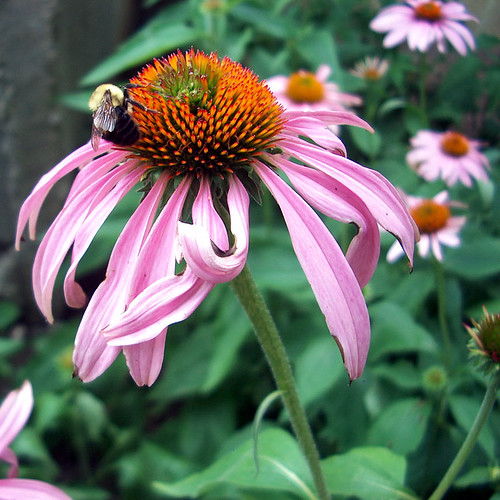Wednesday, February 2, 2011
Native pollinators: divide and conquer
Farmers or just home gardeners can use native pollinators to increase crop yields by diversifying species. Honeybees are prolific pollinators but can fall short when it comes to weather, time of day and temperature. Encouraging native pollinators by enhancing habitat and providing native plants for forage can give crops the most opportunity to fruit. There have been years where all the stars align and we get a variety of honey that we rarely get. It is totally dependent upon weather. If it rains when a certain tree or flower is blossoming there may not be much of an opportunity for pollination and therefore honey production. Encouraging native species like bumble bees, mason bees and butterflies can extend pollination time. Bumble bees can operate at cooler temperatures than honeybees, making for more chance of pollination during a cold snap or a late spring. Bring in a hummingbird feeder, build a home for mason bees or even bats and your odds increase.
Keep a holistic approach and there are even more advantages. More habitat for insects and wildlife means more predatory insects and wildlife to control pests. Fewer pests less need for pesticides or the effort of controlling them naturally.
For more information on native pollinators follow the link. Even more resources here.
Subscribe to:
Post Comments (Atom)


2 comments:
The spring mason bee (blue orchard and hornfaced) are important bees for apples/pears/cherries/almonds.
One issue that is tough to work through now is providing additional side habitat/pollen for these native bees. It isn't cheap to pull down part of your crop land for this purpose. It is also a reach for the farmer to consider this as a viable option.
Crown Bees is looking to help orchard manager/owners with understanding how to use the spring mason bees. This is a first step in this migration to alternate means. (http://www.crownbees.com)
@ Dave
Good points, I think that it is important to stress to farmers of highly pollinator dependent crops, that when utilizing un-planted areas such as roadsides, retention ponds etc. is not enough, reducing your planted area by 5% doesn't mean a 5% reduction in crops. More pollinators more crops. Of course it is a case by case basis but more empirical research needs to be done on the economics of high impact habitat creation and crop yields.
Post a Comment